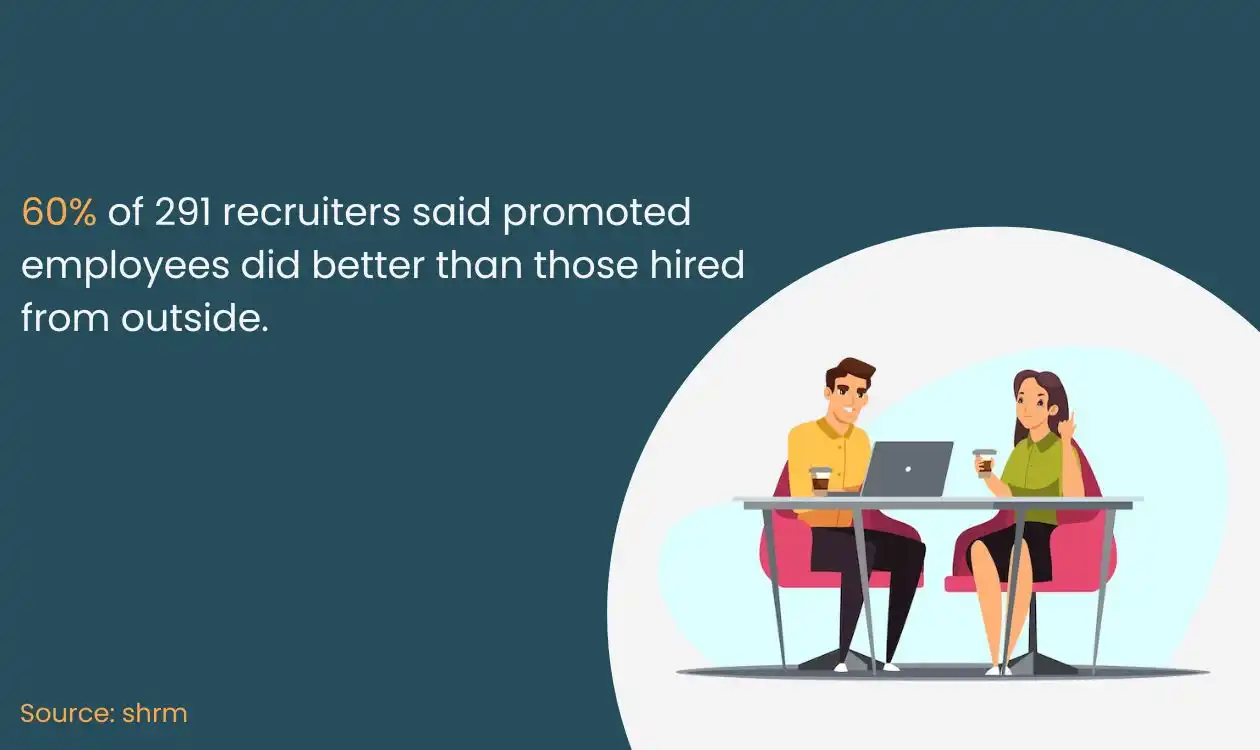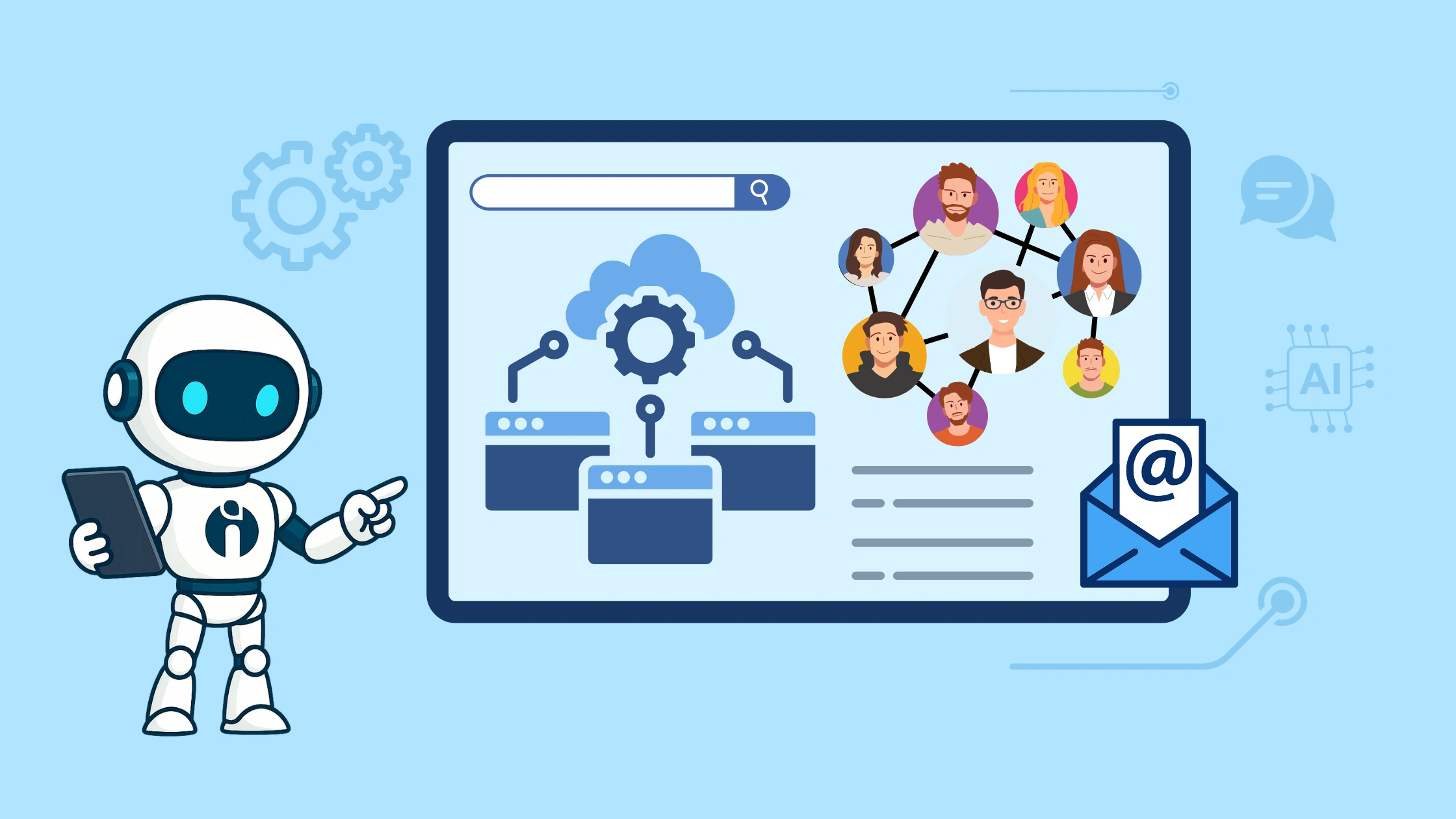TL;DR
- Career mobility involves moving employees across roles to enhance their skills and engagement.
- It attracts motivated talent seeking growth and diverse experiences within an organisation.
- Promoting internal mobility improves employee retention by fulfilling career advancement needs.
- Employees gain new skills, boosting productivity and reducing the need for external hiring.
With the passage of time and higher innovations in today's world, employees urge to learn and do more. They want to fulfil their self-actualization needs by challenging themselves and utilizing their capacity to the fullest. To grow their career and add many more achievements to their resumes, employees usually look for job opportunities in other organizations.
Attracting and retaining talent is difficult, but internal career mobility can prove the right solution. This blog will tell you what career mobility is, how you can provide it within your organization, and the benefits it will have for your employees and organization.
What is Career Mobility?
Career mobility means moving your employees to other positions and roles so they can enrich their skill sets. These roles can be above, below, or on the same levels. Career mobility is a means to put employees under unusual and challenging situations for them to become more resilient to different job roles. For instance, if you mobilize your accountant on a graphic design team, he will have something new to learn. It will gain employee interest and add to your talent community too.
Benefits of Career Mobility
There are many advantages of offering career mobility opportunities to your employees for both you and your employees. Next, we mention some of the most evident benefits of internal career mobility.
Career mobility attracts employees
Career mobility will attract employees who try to outgrow their current potential. They want to put themselves in different situations to learn what is happening around them and gain additional experience in multiple areas. Who would not like to brag about their abilities?
Suppose one day someone is stuck with a software malfunction and has zero knowledge about it, but the person next to him solves his issue even though they work on the same level in the same field. That would be impressive. There are multiple reasons for employees to be attracted to your organization if it provides the benefit of career mobility to its employees.
With career mobility opportunities, you can attract new talent in the market with similar interests. Your current employees will stay intact if they know they can advance their careers along with monetary compensation in your organization instead of looking outside.
Career mobility adds to employee retention
Knowing that your organization will accommodate employees on different levels and roles, employees will not have a reason to leave you if career growth and job enlargement attract them. You need to touch on their pain points in this regard as 70% of employees retain with a company that promotes them within three years of joining. 62% of employees remain retained if laterally mobilized.
Suppose your employee gains interest in arts and is a marketing person. He starts taking graphic designing courses and aims to try something new. Chances are that he might look for jobs in the IT department that require graphic designers. You should provide the opportunity to him to work as a graphic designer so that he meets his interests and you get the returns of his efforts in another job role. Creating job roles and opportunities for employees within your organization will increase employee retention rate with decreased turnover rate.
Employee skills enhance
Employees who work in different departments of their own free will, learn new things. Each person tries to make learning easy and interesting, which positively impacts their work performance. It adds to more productivity and efficiency in return. The more skills they attain, the better it is for you and them. Their skills can prove useful to you, and you would not have to hire new candidates for something that can be done internally.
For example, if you allow your employees to learn python software, you will not have to look for IT specialists. You will resolve the python-related issues if you have the internal talent for the task.
Productivity increases
As per one research conducted by HCI and Oracle in 2015, 60% of 291 employers said employees who got promotions performed remarkably better than employees hired externally for the same roles.
High productivity can result from career mobility because when one employee leaves, many others in line could replace them. Your work never gets paused, with your organizational activities carried out smoothly. Poor productivity can also be an issue for your employees, with their left with low energy and efficiency in their work. But, if you offer career mobility, their focus will improve as they will not have time to be energy deficient but rather on their feet to get the task done. Nobody wants to be a poor performer and miss all the perks. Hence, you will find increased productivity in your organization.
You stay ahead of the competition
If your employees are multitaskers and multi-talented, they would add to your unique selling point, and you will stay ahead of your competition in the market. Suppose there are two companies, A and B. Company A does not support career mobility, and employees have the same daily routine. Whereas at company B, one would find employees in different roles after every two or three months. Now which company employees will have more to offer to other prospective employers? Company B, for sure. So, when employees stay with you and offer more services, it makes you competitive firstly because no one else will be able to match the same skills that your employees have and secondly, the talented employees will stay with you, so they will be unapproachable by others.
Just remember, you need to upskill your employees with a combination of processes and HR technologies to gain a highly competitive workforce.
Conclusion
Career mobility or job mobility within your organization will prevent your employees from looking for growth opportunities elsewhere. Career mobility helps in attracting and retaining talent. Humans get bored of the routine they follow and require pleasant changes to challenge themselves. Offering career mobility to your employees increases productivity and helps you compete well in the market with a unique and upskilled workforce.
FAQs - Frequently Asked Questions
What is the main goal of career mobility in an organisation?
Career mobility aims to move employees into different roles or levels within the organisation, helping them grow their skills and experience. It encourages learning and keeps work engaging, which benefits both employees and the company.
How can career mobility improve employee retention?
When employees see opportunities to grow and change roles internally, they feel valued and motivated to stay. Career mobility reduces turnover by providing new challenges and pathways for advancement without needing to leave the company.
How does career mobility impact productivity?
Career mobility often boosts productivity as employees gain new skills and motivation. They become more adaptable and efficient, contributing more effectively to the organisation’s goals and maintaining smooth operations.
Can career mobility help companies stay competitive?
Yes, by developing a multi-talented workforce through career mobility, companies gain an edge over competitors. Employees offer diverse skills and adaptability, making the business more innovative and ready for changing market demands.

















